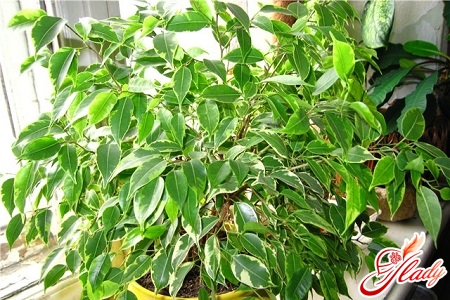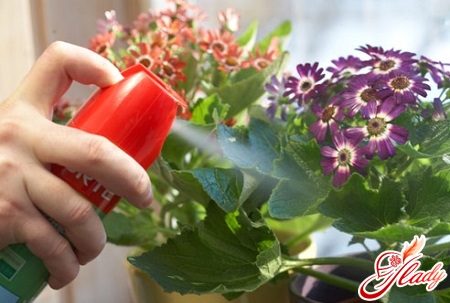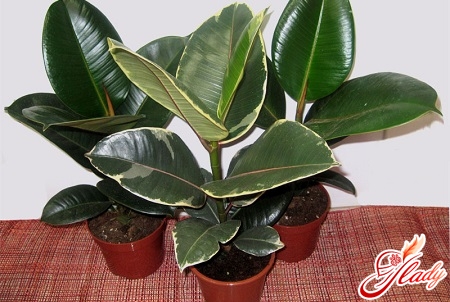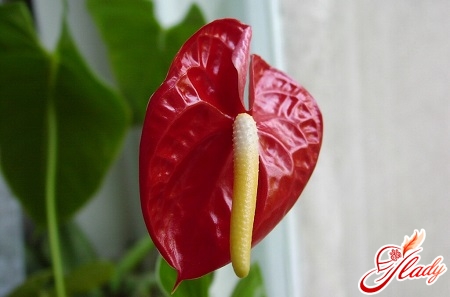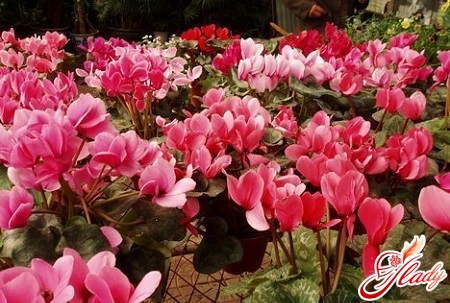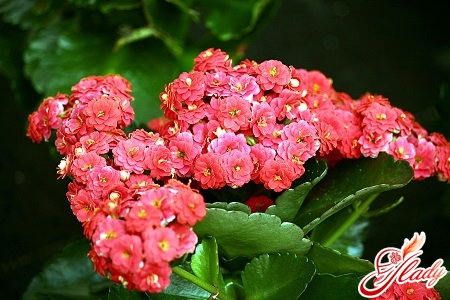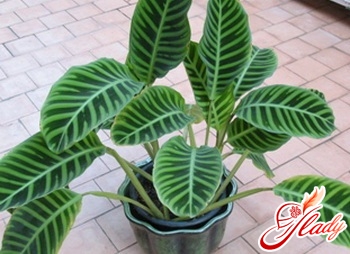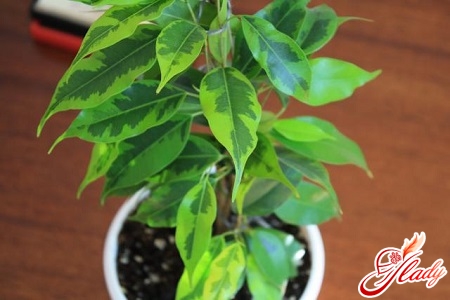 Among all the diversity of species of the genus Ficus, ficusdwarf rightly holds a special place. This is a very beautiful plant, with characteristic small leaves, the length of which is one and a half to three centimeters, not more. Foliage of dark green color has an oval, slightly pointed form. The plant itself is considered to be evergreen. From the stems of the ficus grow thin shoots, which due to their air roots can cling to the wall or a special support.
Among all the diversity of species of the genus Ficus, ficusdwarf rightly holds a special place. This is a very beautiful plant, with characteristic small leaves, the length of which is one and a half to three centimeters, not more. Foliage of dark green color has an oval, slightly pointed form. The plant itself is considered to be evergreen. From the stems of the ficus grow thin shoots, which due to their air roots can cling to the wall or a special support.
Features of pygmy ficus
If we compare this ficus with other species,for example, with Benjamin ficus, Bengal, lyre-shaped or rubber-like, then dwarf is much harder to grow - the plant is more fastidious and demanding. Therefore, experts do not recommend buying it for people who do not have good experience in growing plants. In this case it is better to purchase other types of ficus, care for which is less complex. Nevertheless, dwarfish ficus has its undeniable and special advantages - you can use it as you like. It may be an ampel plant, which is covered with plots of land or walls in greenhouses, and a plant grown around the support. In both cases, the ficus will look great. If the climate is mild and moderate, it is recommended to plant plants in pots or open ground - depending on where you plan to grow it. In the second case, the ficus will form direct shoots, which, in principle, can not form in pots. If such plants do not provide support, then they will acquire a beautiful ampel shape. Today the most popular is the Sunny dwarfish ficus with bubbly, slightly rounded leaves, and also the White Sun - ficus, which is distinguished by a cream border on the foliage. In general, dwarf fig trees are considered to be the most resistant plants from all decorative varieties. Dwarf fig trees grow rapidly. Leaves do not have a large area, and the plant itself is shade-tolerant, which, in principle, can ideally be suitable for room conditions. However, due to the fact that there are a lot of leaves on the ficus, it is very difficult for him to hold the original vertical position. That's why, to ensure the plant good care and rapid growth, professionals recommend that it tie or install a small auxiliary support next to it. Areas of pygmy ficuses - China, Vietnam, Taiwan and Japan; this is an oriental plant. By the way, take note - in Taiwan seeds of dwarf fig are used by chefs to make jelly. Other varieties of ficuses, as is known, are used both in industry and in other production spheres.
Rules for the care of a dwarfish ficus
Now it's time to consider somefeatures of care. As mentioned above, the dwarfish ficus is very demanding, therefore everyone who grows such an exotic plant must clearly know how to take care of it in order to provide it with a rapid qualitative growth.
- Temperature
Minimum temperature for dwarfthe ficus is ten degrees. Only this plant can withstand the temperature drop down to six and even zero degrees. But this is in extreme cases, when it is simply impossible to optimize the temperature. The standard is eighteen to twenty degrees.
- Lighting
Proper care implies competent lighting. Dwarf fig trees, unlike other varieties, do not like light. It is better to place the pot with the plant in the penumbra, preferably a few meters from the window. If the ficus from the window gets too little light, then it can be moved and closer. At home, the ficus will feel well with scattered lighting - it does not tolerate excessively lit space. If you grow a plant outdoors, then it is better to place it on the south side, which is protected from drafts and winds.
- Watering and fertilizing
Dwarf fig trees need frequent watering,especially in the summer. With the approach of winter, watering is recommended to be reduced. In spring and summer, you need to feed the ficus about once every two weeks, using complex additives with trace elements in the composition. To grow such a feeding is necessary in proportions of thirty grams per bucket of water. Note that the dwarf ficus does not tolerate the dryness of the soil. However, it is also not worth pouring the soil. In winter, the soil should be slightly moistened, but because of the lowered temperature the evaporation of water will be less. Accordingly, watering should be reduced. Spray the same plant you need often, because the ficus prefers high humidity. Not bad, if you put a pot of plant on a special tray with water and pebbles. During the spring and summer, feed the plant using nitrogen fertilizers. They need to be dissolved in irrigation water, three times a month. Do not take too much fertilizer - otherwise you will burn the root system.
- Transfer
A competent care is impossible without periodictransplantation. As a rule, such ficuses are transplanted into new pots early in the spring, once every two years. Every next time you need to use a pot larger than before, the size. Then, when the plant reaches certain parameters, it is necessary to replace part of the old soil with a new quality soil soil, PH of which should not be less than five and a half and above six. Here you can add some sand to provide drainage. Periodically inspect the plant and remove old or damaged branches and foliage.
- Reproduction
All varieties of pygmy ficus reproducedue to cuttings length of five to ten centimeters. At the end of spring, they are planted in rods of the same size that need to be placed in a warm place with good humidity. The temperature should be 20-22 degrees. In spring, dwarf fig trees can be propagated using layers. For this, shoots are buried in the soil of a porous structure, stably supporting it in a moistened form. After the horses appear, shoots must be separated from the mother plant.
- Pest Control
Like any ficus, a dwarf varietysuffers from yellowing and falling leaves. This can provoke mealybug. Remove the pest by hand, and then treat the plant with a special anticoccid preparation. However, the yellowed foliage may also indicate rotting or drying the plant. The tick is another strong pest that can reduce the complex care of the plant to zero, so it is so important to get rid of it in time. In general, the mites themselves are not noticeable - they can be determined by possible damage. Remember that spider mites feel comfortable in dry air, so do not forget to often ventilate the room and periodically moisten the air. How to get rid of a tick? First of all, assemble it manually, if it is noticeable. Do not forget to wash the plant after that. You can rinse it with cold water - the pliers are afraid of it and can not stand the cold. Among natural remedies, give preference to tincture of garlic, yarrow or alder. For example, you can pound two hundred grams of garlic or a whole bow of onions and pour this gruel with water. In a few days, use this infusion, as a means for spraying. In the stores you can buy actinic, sulfur or carbofos, as well as some biological substances. Some insecticides can be used against some root mites. However, remember that when working with ficuses, you need to be careful and careful. For example, some varieties provoke photocontact dermatitis. They increase the sensitivity of the skin to the sun's rays, which in the future can lead to serious burns. Dwarf ficus is not worth buying home for people who suffer from breathing problems, as well as suffer from hypotension or suffer constant fatigue. Milky juice, contained in some ficuses, provokes acute pain in the stomach, as well as a feeling of severe fatigue and vomiting. These are the basic rules that should be remembered by those who cultivate the ficus of a dwarf variety. In general, the ficus pygmy is a plant, although small, but magnificent and beautiful, which will certainly fit into any flower garden, even in a small apartment and even more so in a summer residence. It is necessary to try only a little, that the plant has grown healthy and beautiful.




